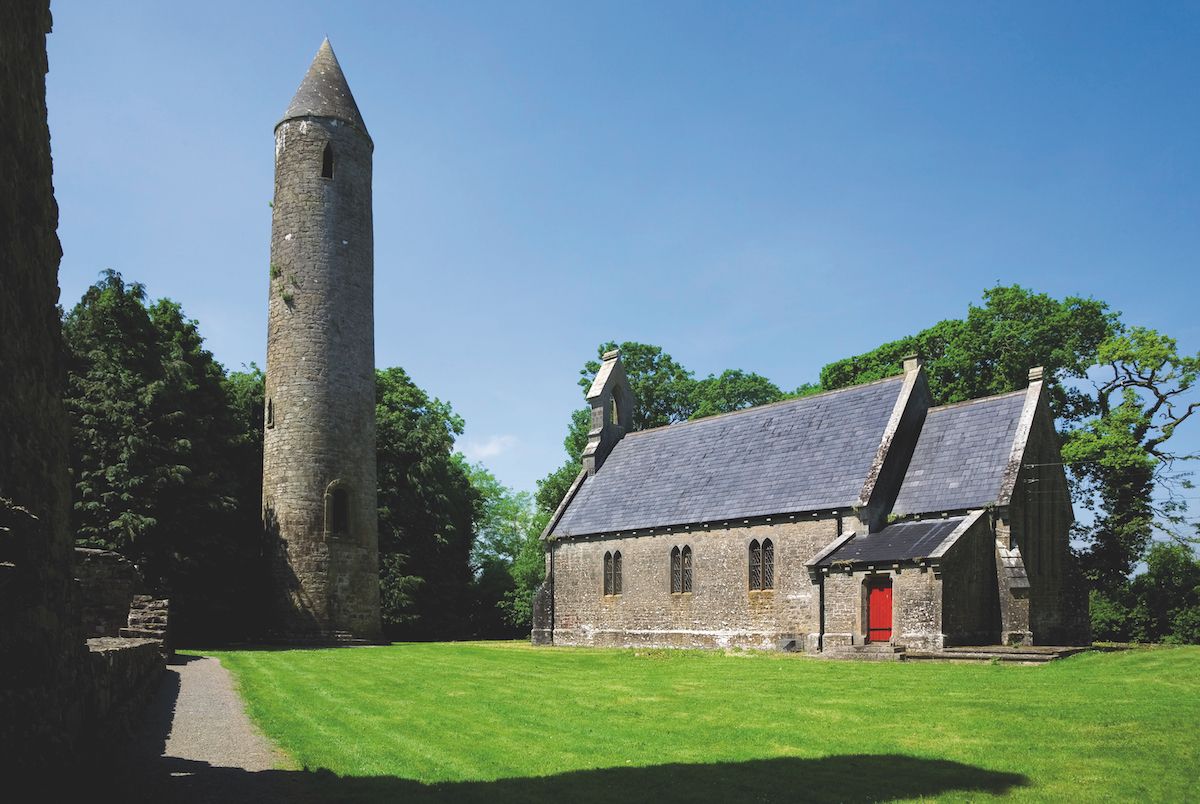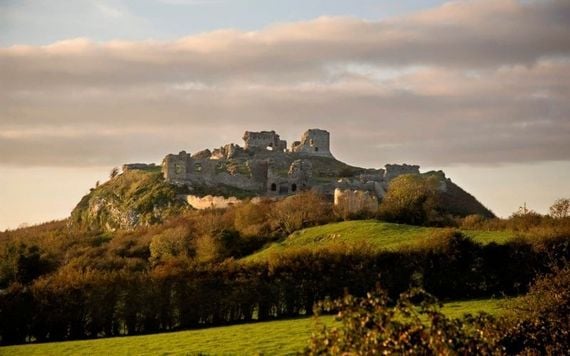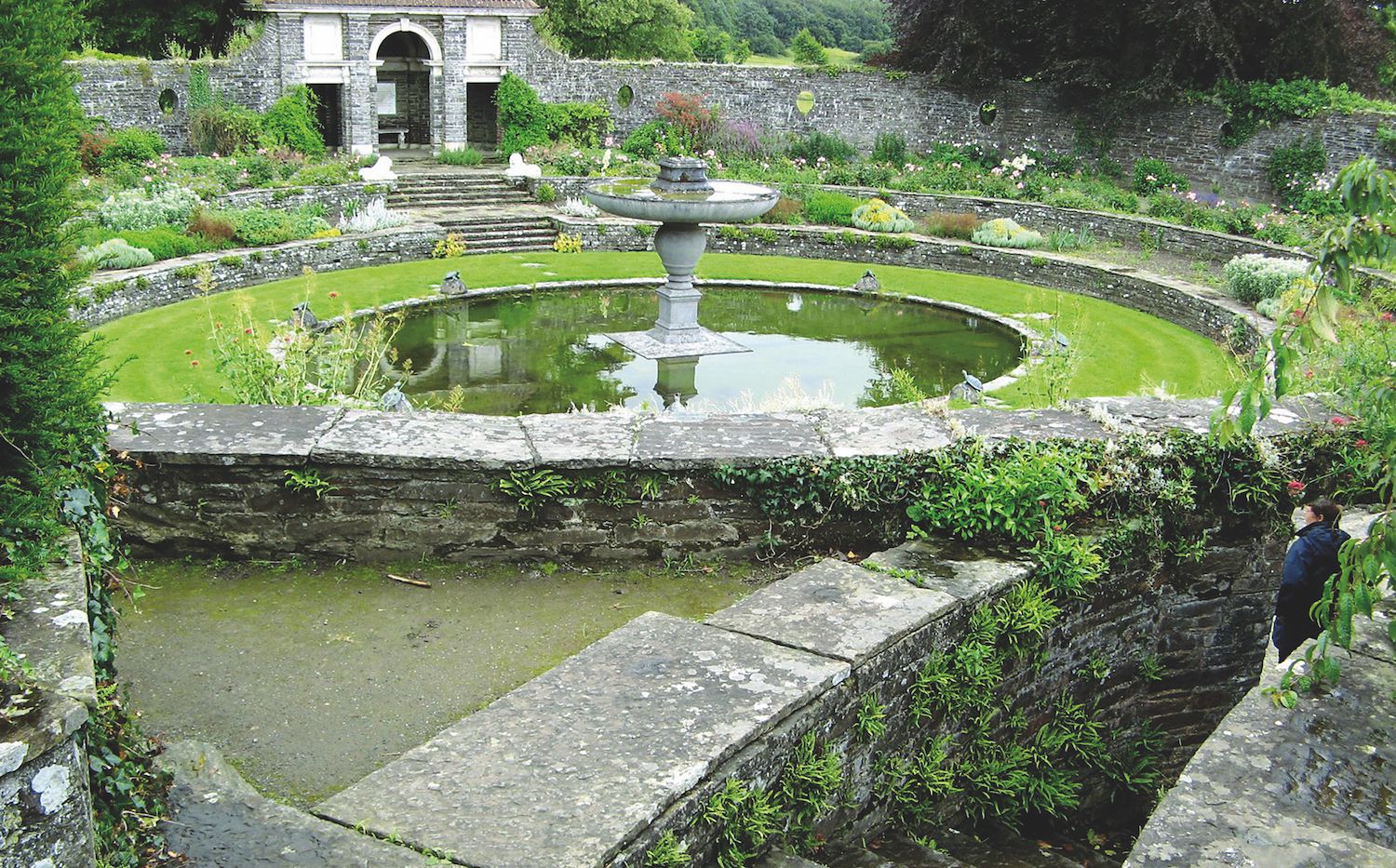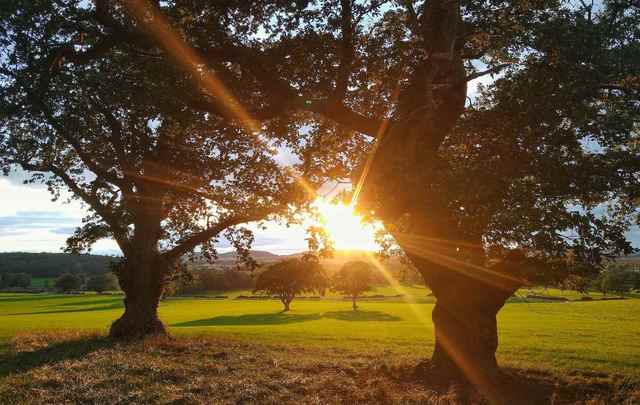“Many visitors come to Laois, passing through the midlands — our job is to remind them that there’s good reason to stay here for a little longer.”
So says farmer and brewer David Walsh-Kemmis — his love of the county is as intoxicating as his recently launched craft beers. He welcomes me into Ballykilcavan Farm, his family’s home for 13 generations, and notes his delight that his children can grow up here surrounded by 400 acres of land and forestry — not to mention the abundance of wildlife.
“Being here means that we, as a family, can continue supporting our community,” he adds, “and through our brewery tours, give visitors another reason to stay in County Laois.”
As we explore the beautifully preserved 19th-century stable yard — complete with a lively dove house — David explains that to ensure the farm’s viability, a few short years ago, he diversified by opening the brewery that’s named after the farm and uses many of its resources.
“We source the water from our well,” he explains. “Along with our own barley, we’ve got a small, expanding hop garden.”
For many decades, Ballykilcavan Farm has claimed the country’s largest walnut tree — thanks to the instant success of their brewery, additional awards now weigh down their mantlepiece. One sip of their selection of beer, and it’s easy to understand the fuss.
Tower of strength
The more I explore Laois, the more I realize how brilliantly connected people like David are to their home county. There’s an extraordinary commitment evident from locals, who proudly — and often voluntarily — preserve the region’s storied past, which spans over 10,000 years. I met two such ladies at my next stop: Timahoe Round Tower.

Timahoe Round Tower.
This immaculately preserved medieval structure was a later addition to the monastic settlement founded in Timahoe by soldier-turned-saint Mochua in the 7th century. Exploring the heritage center, I meet cheery volunteers, Mary and Anne, who offer me coffee and insights about the former monastery — including details of a priest’s murder in a church doorway in 1019.
Less macabre, I learn that centuries before alarms were invented, Saint Mocha, who initially lived here as a hermit, relied on a rooster to awaken him for morning prayer while a mouse nibbled his ear when he dozed off during the day. A fly would also walk along the Psalms’ text to ensure he never lost his spot! A modern statue on the grounds celebrates the saint’s three helpful comrades.
Centuries later, the tower’s bells replaced the rooster’s role, which would both summon monks for prayer and sound the alarm about Viking attacks.
“Today, the only sound around here is the constant chatter amongst locals and tourists,” Mary jokes. “You’re probably discovering that we love to talk!”

Are you planning a vacation in Ireland? Looking for advice or want to share some great memories? Join our Irish travel Facebook group.
As we admire some of the tower’s details — including carvings of human heads with flowing beards and mustaches — Mary reflects on their recent heritage festival commemorating 1,100 years since the Vikings attacked the settlement. In addition to archery, weaving and re-enactments, she tells me that there was a fancy dress where participants — young and old — donned period costumes.
Threads of time
My sartorial conversations continue in the town of Mountmellick, although on this occasion, the clothing under discussion is somewhat more modern than Viking attire — the world-famous Victorian white-on-white embroidery. The museum and the two volunteers I meet here, Marie Walsh and Ann Dowling, honor this once-bustling craft industry founded in the 1800s.
Mountmellick Park.
The enchanting ladies — both skilled embroiderers — reveal that the museum aims to conserve and display original pieces of Mountmellick Embroidery and protect the memory of local Quakers, who were instrumental in teaching the craft in schools.
“What’s special is that this is the only form of embroidery that can claim to be entirely Irish in origin and design,” Marie, the museum’s treasurer and secretary, tells me as I admire bed coverlets, pillow shams and tablecloths. Many items are decorated with local flora and fauna designs — notably blackberries, dog rose, wild clematis and viola.
We discuss some key figures in Mountmellick Embroidery’s success, such as Johanna Carter, Margaret Beale, Anne Jellicoe and, more recently, the late Sr Teresa Margaret, credited with rejuvenating the craft in the community thanks to her long-running series of classes.
“They were pioneers for empowering women,” Marie proudly praises.
But this museum — which welcomes fashion enthusiasts from all over the world and also archives the Famine era — is far more than just a tribute to the past.
“The museum’s overall goal is to keep the craft alive,” Ann, the chairperson, reveals, highlighting recent collaborations with renowned Irish designers Caroline Mitchell and Heidi Higgins, whose interpretations of incorporating embroidery into modern fashion are on display here.
“Ours is a living craft,” Ann adds. “Our museum is rooted in the past, but our vision is firmly set on the future.”
A devastating past
After refueling in the delightful O’Hare’s Corner café, located below the museum, I venture to the Rock of Dunamase. This jagged outcrop towers above Laois’ rolling countryside and was once the site of an early Christian settlement, which those pesky Vikings once again pillaged in 842. The Rock of Dunamase later became a crucial Anglo-Norman stronghold in the county — and formed part of the dowry of Aoife, daughter of Diarmuid Mac Murrough, King of Leinster, when she married Norman conqueror Strongbow in 1170.

Rock of Dunamase.
In subsequent centuries, the site ping-ponged between eminent clans before finally being destroyed during the Cromwellian invasion in 1650. While it currently lies in ruin, like many sites scattered across the Emerald Isle, an impenetrable atmosphere lingers. The same could be said for Donaghmore Workhouse, the next stop on my itinerary.
Here, I meet another of the county’s tireless volunteers, Trevor Stanley, a local dairy farmer and historian. The workhouse, immense in size, operated between 1853 and 1886, housing the destitute in the years following the Great Famine. Conditions were deliberately made unappealing to limit numbers.
“Back then, Catholic families were large,” Trevor explains. “It was inconceivable for mothers to be separated from their children. Because of their desperation, they’d no choice but to come here and allow their families to be segregated into different sections.”
Trevor reveals that our ancestors were forced to wear uniforms like inmates and subjected to physical and psychological abuse. He also points out that the windows were intentionally positioned out of reach to prevent families from glimpsing each other.
“Donaghmore Workhouse has proven to be an eye-opening experience for our visitors, including US actor and singer Mandy Moore — here while tracing her Irish roots,’ Trevor tells me. “People can’t believe the sheer scale of the various buildings and, in particular, the harsh conditions inmates faced.”
The British army later repurposed the buildings into barracks, while the Donaghmore Co-Operative Society, serving local farmers, has also used part of the grounds. Today, the Donaghmore Workhouse and agricultural museum — teeming with traditional machinery, tools and equipment — offer snapshots into a devastating period in Irish history.
A return to nature
My second day exploring County Laois involves a welcome immersion into nature. While hikers and bikers might opt for Slieve Bloom — which, along with the Massif Central in France, are the oldest mountains in Europe — I opt for a bog walk, located on the periphery of one of Leinster’s most picturesque towns, Abbeyleix.
Laois’ unstoppable people power is again evident here as this bog project was spearheaded by a local action group known as AREA — Abbeyleix Residents for Environment Action. Following negotiations with Bord Na Móna — the semi-state company that oversees the county’s peatlands — a 50-year lease for the bog was given to the community, now responsible for its conservation and protection.
Another outdoor option in this area is Ballinakill’s Heywood Gardens, which showcases two contrasting styles — an 18th-century park created by Frederick Trench and the formal gardens designed by Sir Edwin Lutyens and Gertrude Jekyll in the early 1900s.
The original house sadly burned down in 1950 — still, green-fingered enthusiasts will delight in the plants, flowers and architectural features, including a freestanding sham ruin folly and the sunken garden with its circular terraces and pool. Overlooking seven counties, Heywood Gardens embodies the phrase ‘hidden treasure’.

Heywood Gardens.
A short drive towards Castletown is the charming Gash Gardens created in the 1980s by dairy farmer Noel Keenan — today, they are overseen by his daughter, Mary, and her husband, Ross, both leading horticulturists.
“I inherited my father’s love of gardening, and over four decades, we’ve amassed an extensive and vibrant selection of plants and trees,” Mary tells me. She adds that they welcome guests from all over the world, who might be “garden lovers, plant enthusiasts, keen photographers or those looking to spend a peaceful and relaxing day here, surrounded by beauty and nature.”
Jewel in the crown
Another of County Laois’ many crown jewels is Emo Court — a neo-classical mansion designed by famed architect James Gandon, also responsible for Dublin’s iconic Custom House and Four Courts.
Emo Court.
Over the centuries, the keys to Emo Court have been held by diverse owners — ranging from the earls of Portarlington to the Jesuits, who transformed the property into a seminary. In the 1960s, Major Cholmeley-Harrison acquired ownership and embraced the challenge to restore it fully. Some 30 years later, he kindly gifted the estate to the Irish people.
In addition to the house, currently closed for refurbishment, and dainty tea rooms, there are woodlands, walled gardens and a lake to enjoy. On my visit, I stumble across a wedding party, making the most of the picture-perfect surroundings by striking poses in front of a bronze statue of Greek goddess Polyhymnia, surrounded by pops of lavender catmint.
Returning home, I visit Portarlington’s Solas — Ireland’s first eco garden center and, inspired, stock up on plants. I may be leaving County Laois, but the various roses and foxgloves I purchase here ensure its magic will surround me over the coming months and years. They’ll also serve as a reminder that a region’s greatest gifts are its local environment and people — perfectly illustrated by County Laois.
Visit laoistourism.ie.
Hotel intel
During my visit to County Laois, I stayed at the four-star Midlands Park Hotel, located on the periphery of Portlaoise — the county’s principal commercial town that could be described as a miniature Galway, thanks to the delightful candy-colored shops, cafés and bars lining the streets.
With its striking columned exterior and chic and atmospheric interior — the results of a recent multi-million revamp — Midlands Park Hotel doubled as a perfect base while I discovered the region.
Boasting contemporary bedrooms and state-of-the-art leisure and spa facilities, this establishment was a hub of activity during my stay – unsurprising, considering the exceptional welcome given to guests by staff. I also dined at their trio of restaurants — An Tríog, Charter Bar & Eatery, and, a definite highlight, their award-winning Kelly’s Steakhouse.
Visit midlandsparkhotel.com.
*Originally published in December 2023. Updated in June 2024.




Comments